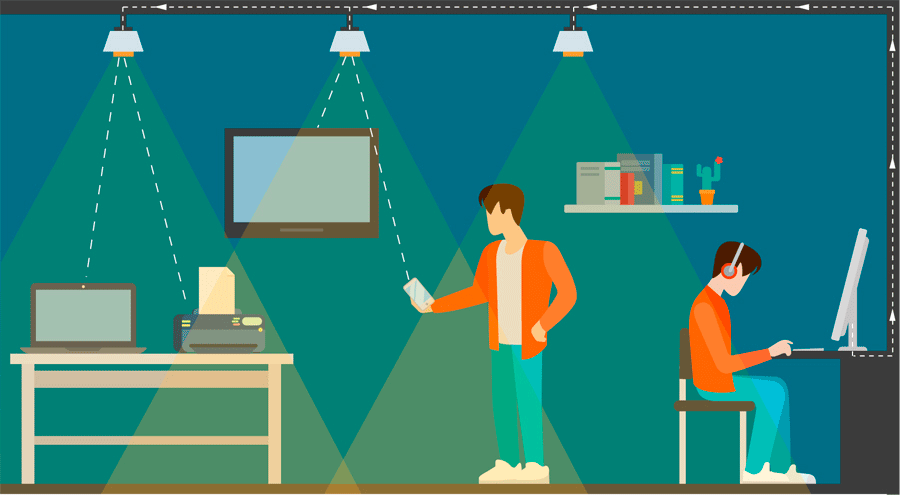By John Curran
Ships on the ocean still have the ability to communicate with each other via lamps flashing in Morse code. Technology has clearly advanced since that was the standard, but using light as a form of communication is coming back in a big way. We’re now just a few years out from what could be widespread adoption, so distributors need to know what’s coming with Li-Fi, what’s already here, and what possibilities and restrictions exist with the technology.
The radio spectrum is getting pretty crowded these days. Between Bluetooth, RFID, smartphones and Wi-Fi, data logjams are coming, especially with the Internet of Things (IoT). One way to avoid the increasingly crowded radio spectrum is by avoiding it entirely—enter Li-Fi.
Various firms are now showing off dongles and systems that are meant to adapt existing technology to Visible Light Communications (VLC). Rather than sending radio waves, LEDs in luminaries can instead send high-frequency light bursts to transmit data the way that a Wi-Fi router would. That’s what gives the technology it’s name with light replacing wide for Li-Fi.
Ingrid Canal, OLEDCOMM’s director of marketing, notes the promise is already there. “We are now able to produce a 10 MB/sec effective connection and, soon, way more,” she notes. The company has already produced a working USB dongle and is also embarking on a smartphone cover.
Of note to electrical distributors, Canal observes that the key factor in the success of the liFiNET system will be the Power over Ethernet (PoE) for the transmitters and LEDs themselves. Still, Canal notes that OLEDCOMM is still increasing its partnerships with firms around the world.
However, one key issue remains—not the download speed, but the upload speed. With dongles or adapters, the possibility of user error can still be high. And, of course, humidity, particulates and other impediments could also hamper download speeds as well.
“VLC certainly offers attractive throughput and scale in the downlink direction when coupled with a lighting fixture, but faces challenges in the upstream direction since clients do not have a similar light source and don’t have control of device orientation,” notes Rob Glass, Vice President of Technology at Cree.
An apt comparison might be the early days of high-speed internet using satellite or cable TV connections. In both cases, the downstream was not the issue: HDTV and hundreds of channels were available for years. Rather, the upstream and user instructions had to be sorted out, and that took some time.
“Commercial office space could be a natural first fit for the technology,” Glass notes. Yet the
overall solution, cross-vendor integration and field testing will likely put pressure on the pace of introduction to the market.”
That doesn’t mean that companies like OLEDCOMM aren’t already making strides, as is another company based in France. Canal notes that GEOLiFi already exists and is a “kind of unidirectional system… that can be used as an indoor positioning system.”
More like a radio station, the lighting provides location-based content that is great for retail spaces. These could also be used in the future for additional warnings for entering dangerous areas of facilities and other notification scenarios.
The day-to-day mass usage of LiFi is still some ways out. However, distributors will need to adapt to the growing complexity of that system and the environmental constraints that it provides just as they already do with IoT projects. The future is coming – will your company be ready?
Tagged with lightED